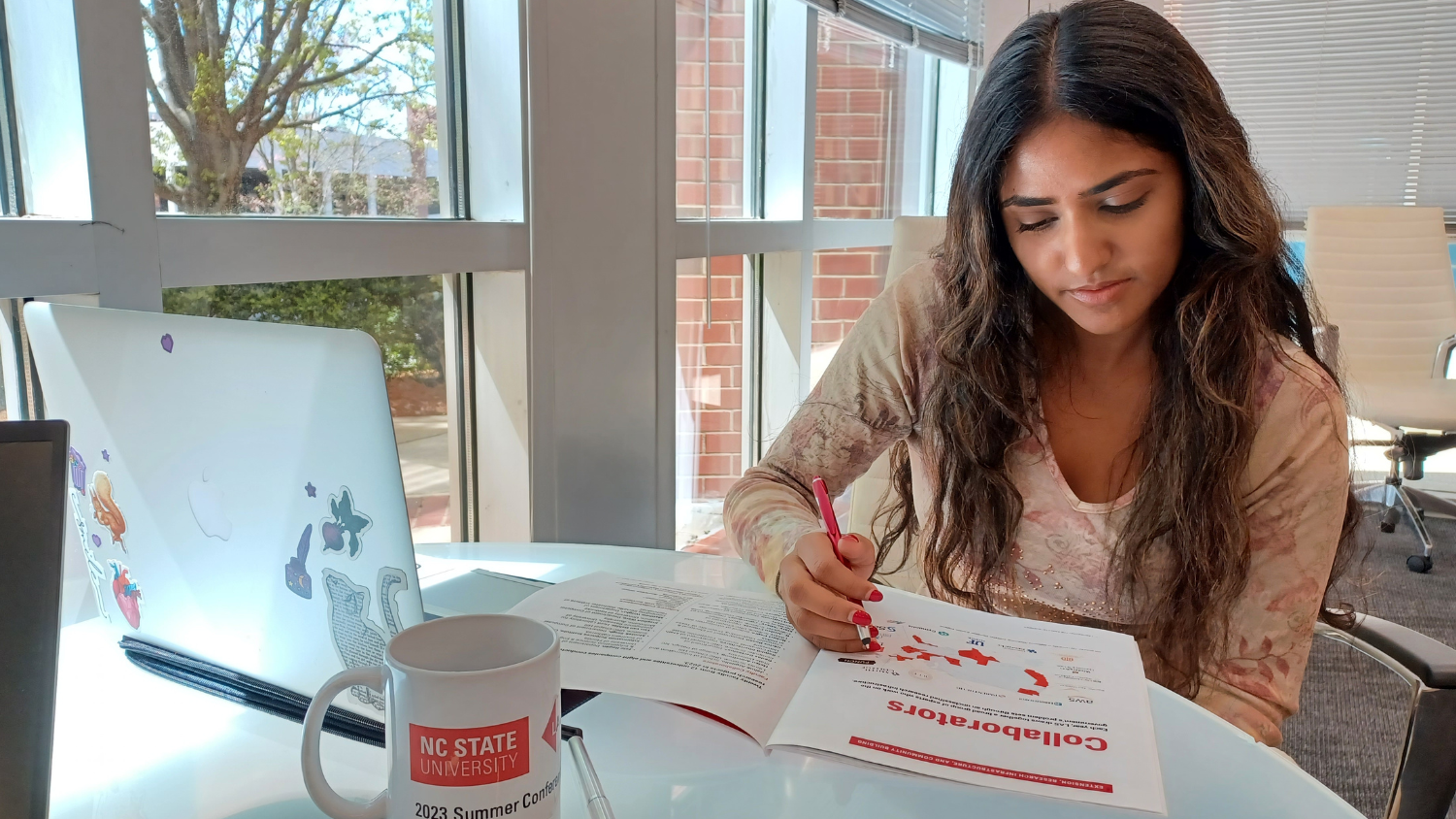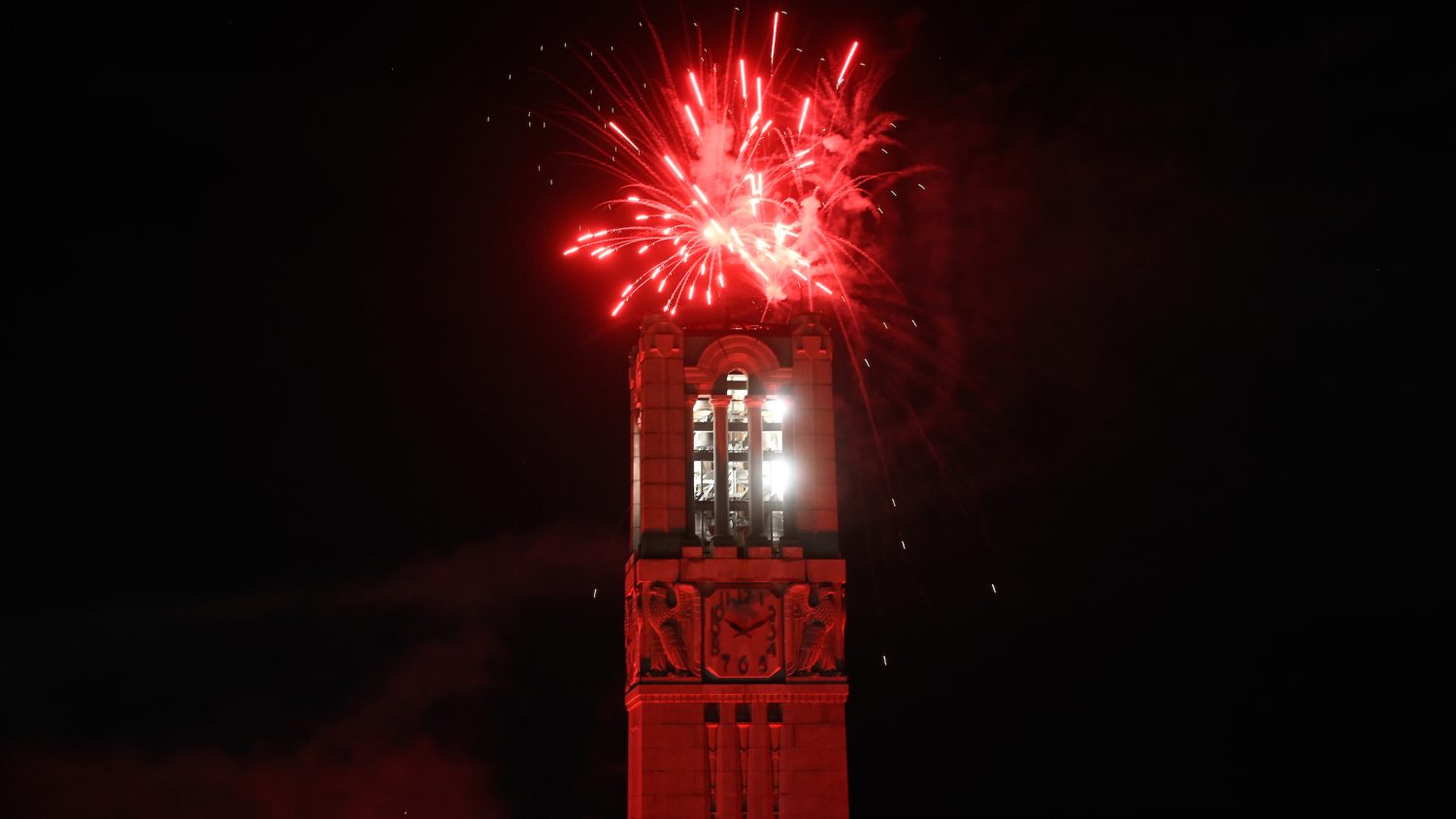What Happens When Design Students Innovate for Intelligence Analysis
Intelligence analysts must make sense of never-ending waves of information that crash over them from every direction. Understanding how best to navigate such a vast, ever-changing ocean of data with depths often unknown is a daily problem for analysts. Moreover, each analyst may have a different focus, different needs, and different goals. What if an analyst could have access to an easily-digestible report that presents a tailored summary of relevant information from many sources all in one place?

As part of the first Summer Conference for Applied Data Science (SCADS) hosted at LAS in 2022, participants took on the “Grand Challenge” of generating short, tailored daily reports, or TLDRs, that use machine learning and artificial intelligence to provide personalized content relevant to an individual user’s objectives and interests. But first, let’s take a look at how graduate students at the NCSU College of Design, under the tutelage of Professor Helen Armstrong and mentorship from LAS analysts, applied concepts of design research this past spring semester to imagine what prototype user interfaces for TLDRs could look like for different intelligence analysts in different scenarios. The students employed user experience design methods (UX) to research and develop innovative solutions that addressed user pain points and unique design criteria.

Three design teams were each given a fictitious, unclassified user persona of a type of analyst in a particular scenariowithin a specified use case, as well as examples of relevant data types.
- Nyah is a search and discovery analyst who has been called in to surge on a crisis situation: a mass kidnapping of several employees from a fictional company called GAStech. A fictional organization known as the Protectors of Kronos (POK) is suspected in the disappearance.
- Chloe is an analyst reporter who has been focused on the operations of multiple Violent Extremist Organizations (VEOs) for some time now. This is a topic that is familiar to her, and she is currently working to predict the nature of a terrorist threat that involves a coordinated attack being planned by three separate terrorist organizations in three US cities.
- Ron is a language analyst specializing in analyzing information in the foreign language “Kobian”. He has been asked to help on a topic that is unfamiliar to him: Kobian leadership decisions following a visit by the Kobian President to China.
The personas provided the relevant background of the job roles and an example work day for such analysts working in the above situations, but each team also conducted further research and multiple interviews with real analysts to obtain more details about analysts, their workflows, needs, and challenges. The teams then created 3 draft TLDR user interface designs each, and presented these to LAS mentors for feedback. Analysts who were interviewed were also invited to give feedback.

Using an iterative design approach, student teams then continued to work together, consult LAS mentors to receive feedback, and refine their TLDR interface designs until the teams presented one final prototype each. Click on the “Watch Video” button below each image to watch the final presentations video.
Situational Awareness Interface (S.A.I.)
Analyst user type: Search & Discovery analyst in a crisis situation (Nyah)Design Students: Amanda Williams, Liz Chen, Riley Walma

ATLAS
Analyst user type: Analyst Reporter in a familiar situation (Chloe)
Design Students: Elizabeth Gabriel, Brian Sekelsky, Jillian Swaim

T-HEX: Scan, Inform, Complete
Analyst user type: Language Analyst in an unfamiliar situation (Ron)
Design Students: Katie Denson, Jeff Wilkinson, Jacob Williams

For more information, please contact:
- Lori Wachter (lawachte@ncsu.edu)
- Sue Mi Kim (smkim4@ncsu.edu)
- Sean Lynch (sclynch@ncsu.edu)
- Ken Thompson (klthomp3@ncsu.edu)
- Categories:


